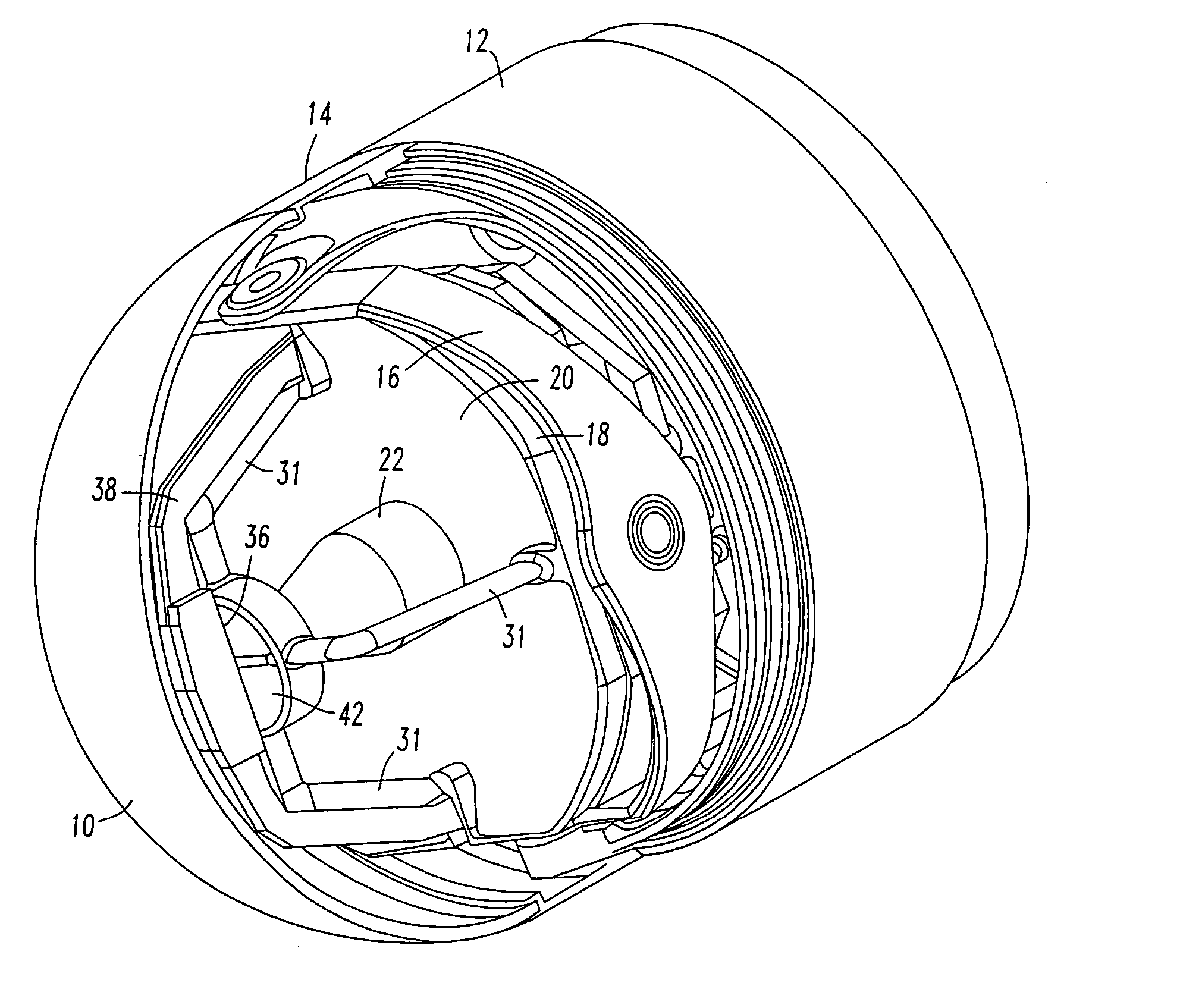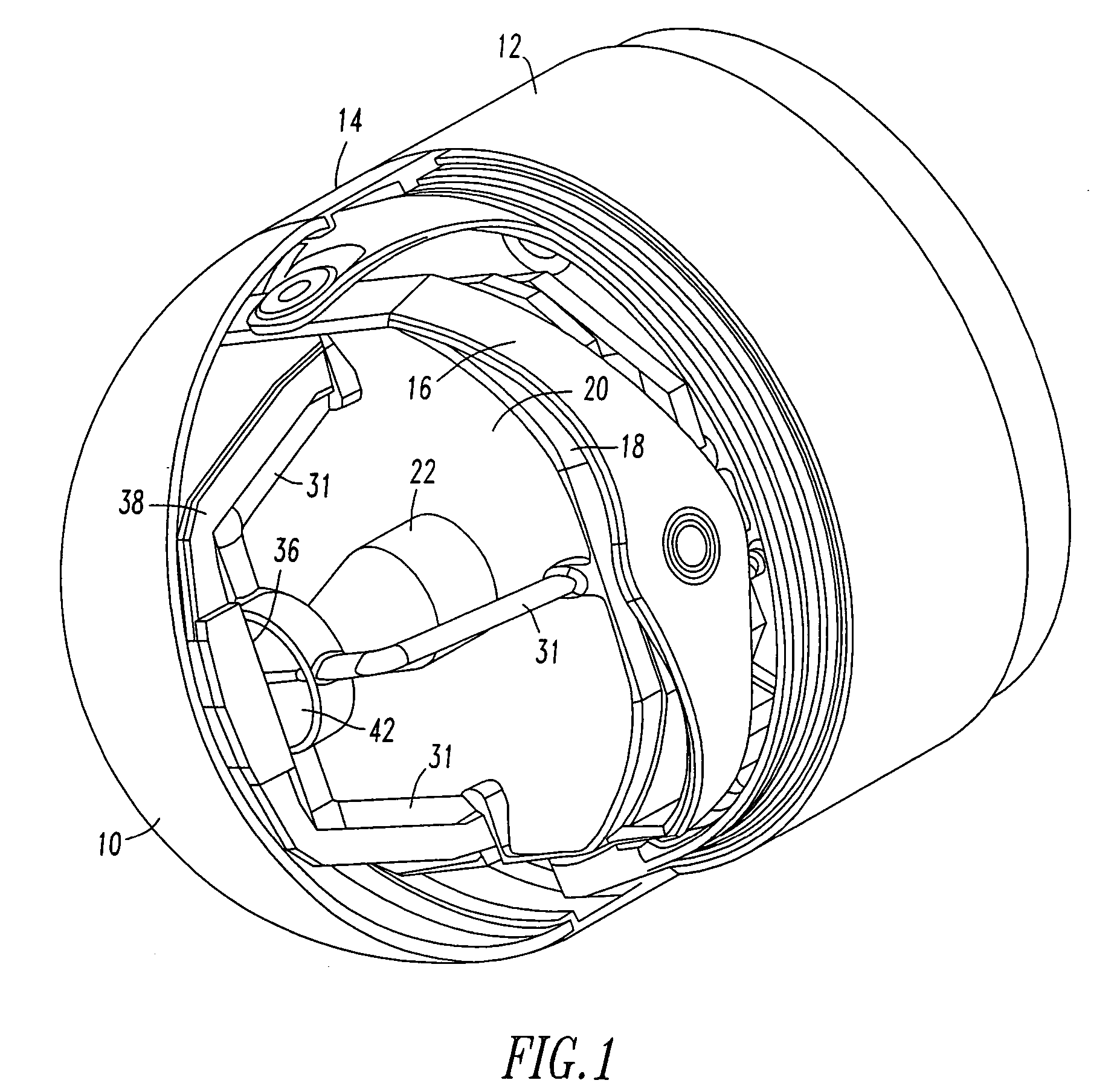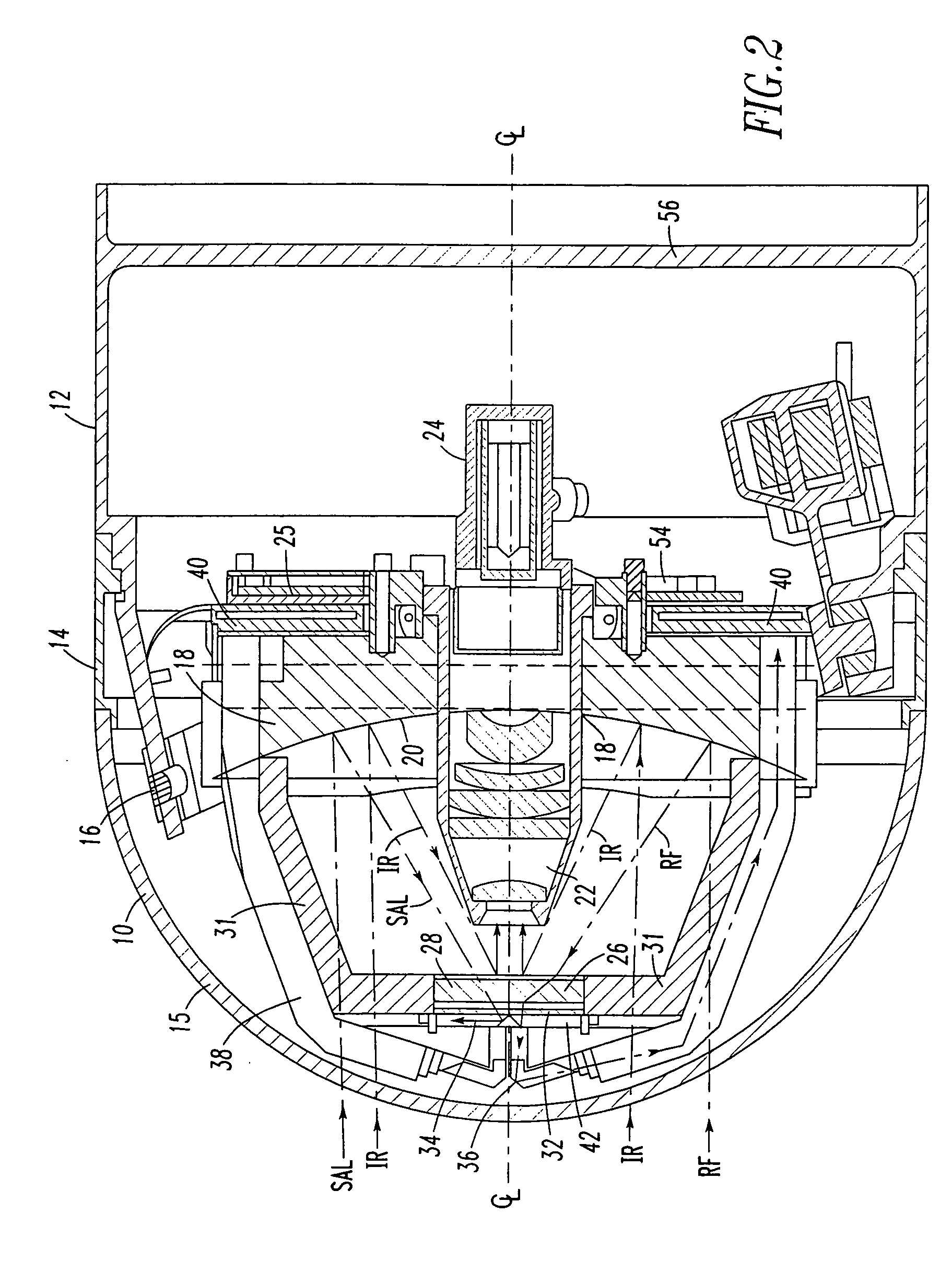Tri-mode co-boresighted seeker
a sensor system and co-boresighted technology, applied in direction controllers, antenna details, antennas, etc., can solve the problems of restricting the collection aperture, limiting the amount of laser energy, and exhibiting typical degraded performan
- Summary
- Abstract
- Description
- Claims
- Application Information
AI Technical Summary
Benefits of technology
Problems solved by technology
Method used
Image
Examples
Embodiment Construction
[0030] This invention is directed to a common aperture for three sensors of millimeter wave (MMW), infrared (IR) and semi-active laser (SAL) energy which are aligned on a common boresight or central longitudinal axis (CL) of seeker apparatus used, for example, in an airborne platform such as a missile and which allows all three modes to simultaneously use the full transmitting / receiving aperture.
[0031] Referring now to the drawings wherein like reference numerals refer to like components throughout, reference is first made to FIGS. 1-9 which disclose the details of a first embodiment of the invention. Reference numeral 10 denotes the radome of a tri-mode seeker assembly including an annular base member 14 to which is secured a housing 12 for supporting a gimbal assembly 16 as well as attachment of the radome 10. A primary mirror assembly 18 including a parabolic reflecting surface 20 is mounted on the gimbal assembly 16 so that it can be controlled to move independently in two orth...
PUM
 Login to View More
Login to View More Abstract
Description
Claims
Application Information
 Login to View More
Login to View More - R&D
- Intellectual Property
- Life Sciences
- Materials
- Tech Scout
- Unparalleled Data Quality
- Higher Quality Content
- 60% Fewer Hallucinations
Browse by: Latest US Patents, China's latest patents, Technical Efficacy Thesaurus, Application Domain, Technology Topic, Popular Technical Reports.
© 2025 PatSnap. All rights reserved.Legal|Privacy policy|Modern Slavery Act Transparency Statement|Sitemap|About US| Contact US: help@patsnap.com



